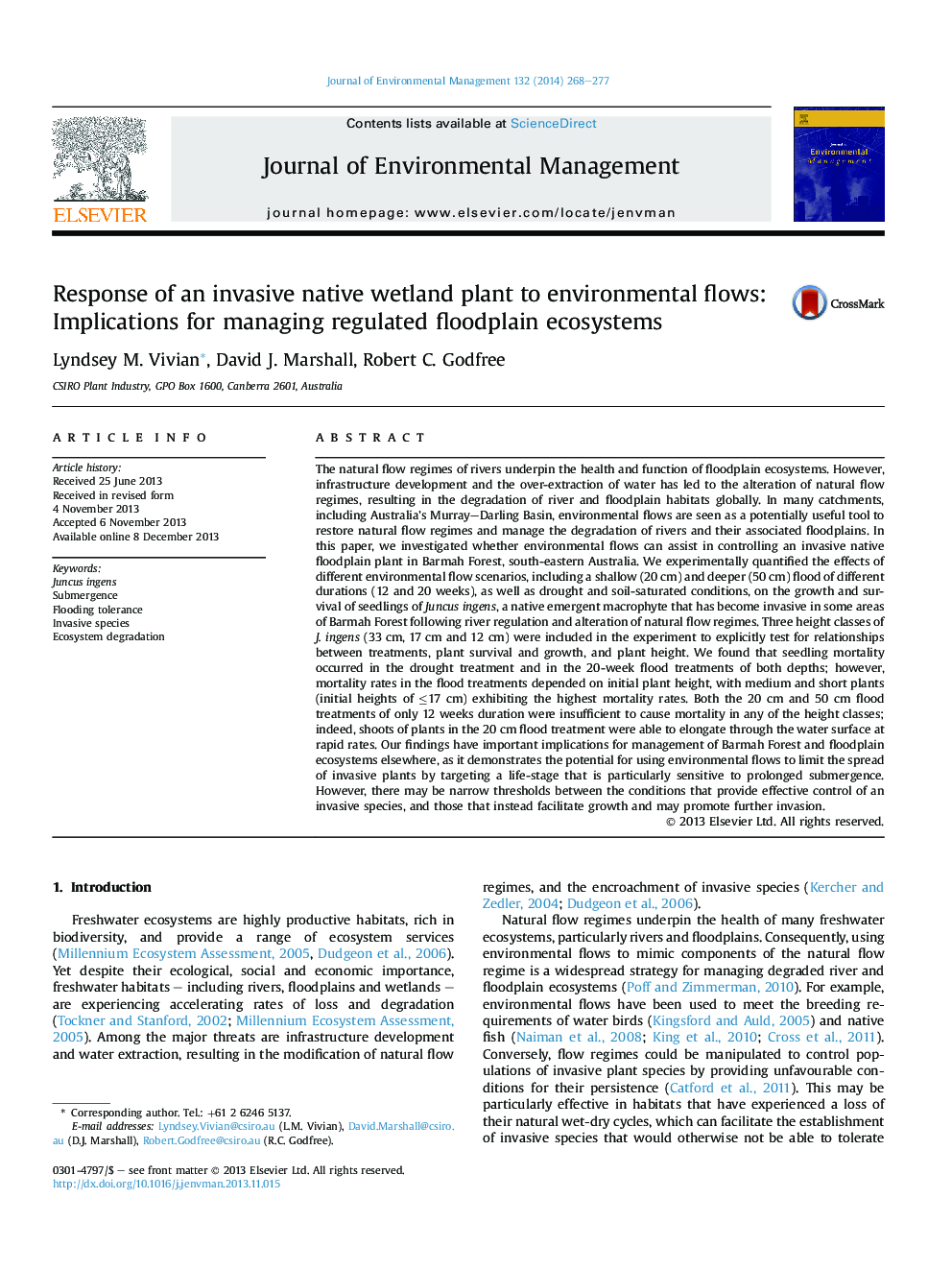| کد مقاله | کد نشریه | سال انتشار | مقاله انگلیسی | نسخه تمام متن |
|---|---|---|---|---|
| 1055803 | 1485280 | 2014 | 10 صفحه PDF | دانلود رایگان |
• Effects of environmental flows on an invasive plant are experimentally tested.
• Prolonged submergence of shoots reduced growth and survival in smaller plants.
• Floods of insufficient depth and duration promoted plant growth.
• Narrow thresholds may exist between favourable and adverse flow scenarios.
• Environmental flow management should assess any risk of promoting undesired species.
The natural flow regimes of rivers underpin the health and function of floodplain ecosystems. However, infrastructure development and the over-extraction of water has led to the alteration of natural flow regimes, resulting in the degradation of river and floodplain habitats globally. In many catchments, including Australia's Murray–Darling Basin, environmental flows are seen as a potentially useful tool to restore natural flow regimes and manage the degradation of rivers and their associated floodplains. In this paper, we investigated whether environmental flows can assist in controlling an invasive native floodplain plant in Barmah Forest, south-eastern Australia. We experimentally quantified the effects of different environmental flow scenarios, including a shallow (20 cm) and deeper (50 cm) flood of different durations (12 and 20 weeks), as well as drought and soil-saturated conditions, on the growth and survival of seedlings of Juncus ingens, a native emergent macrophyte that has become invasive in some areas of Barmah Forest following river regulation and alteration of natural flow regimes. Three height classes of J. ingens (33 cm, 17 cm and 12 cm) were included in the experiment to explicitly test for relationships between treatments, plant survival and growth, and plant height. We found that seedling mortality occurred in the drought treatment and in the 20-week flood treatments of both depths; however, mortality rates in the flood treatments depended on initial plant height, with medium and short plants (initial heights of ≤17 cm) exhibiting the highest mortality rates. Both the 20 cm and 50 cm flood treatments of only 12 weeks duration were insufficient to cause mortality in any of the height classes; indeed, shoots of plants in the 20 cm flood treatment were able to elongate through the water surface at rapid rates. Our findings have important implications for management of Barmah Forest and floodplain ecosystems elsewhere, as it demonstrates the potential for using environmental flows to limit the spread of invasive plants by targeting a life-stage that is particularly sensitive to prolonged submergence. However, there may be narrow thresholds between the conditions that provide effective control of an invasive species, and those that instead facilitate growth and may promote further invasion.
Figure optionsDownload as PowerPoint slide
Journal: Journal of Environmental Management - Volume 132, January 2014, Pages 268–277
